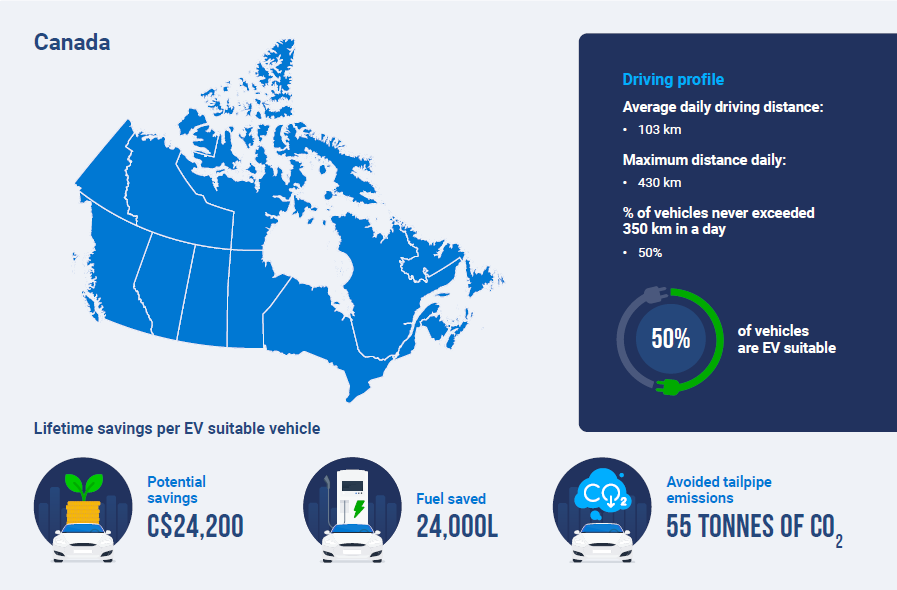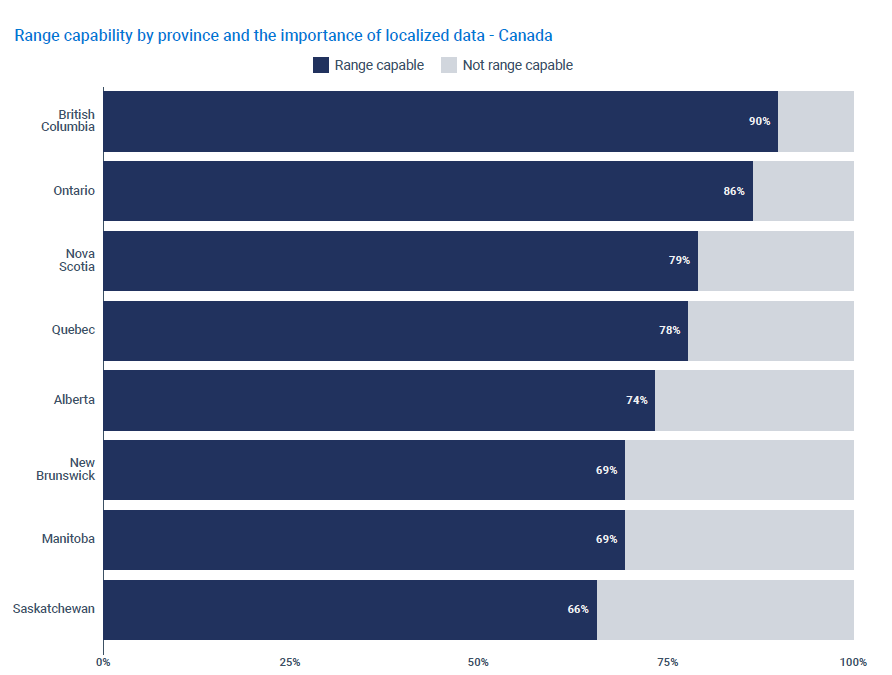Higher electrification potential for rural, short-haul runs: Geotab report
While half of Canadian commercial vehicles are electric vehicles (EV)-suitable, electrification is more feasible in rural areas with fleets operating vehicles travelling within 200 miles, a range of electric vehicles currently in the market, Geotab’s recent study found.
Geotab, a vehicle and asset-tracking telematics provider, assessed the daily vehicle usage patterns of approximately 750,000 commercial vehicles across seven countries: U.S., Canada, Spain, Italy, Germany, France, and the UK. The report takes an in-depth look at the charging behaviors of more than 5,200 fleet-operated EVs across North America and Europe, from June 1, 2022, to May 31, 2023. It also considers telematics data from nearly 500,000 class 3-8 trucks, operating within Canada and the U.S. during the same time period.
General suitability assessment
Of all the vehicles studied across the seven countries, Geotab concluded that 75% of the light-duty internal combustion engine (ICE) vehicles could be efficiently substituted with EVs, with 41% of ICE being cost-effective and capable of saving around $16,000 per vehicle over seven years. This will also prevent the use of 2.2 billion gallons of fuel while avoiding 19 million metric tons of CO2 emissions in the next seven years.
In Canada, the numbers add up to $24,200 of potential savings per vehicle, in addition to 24,000 liters of fuel and 55 tonnes of CO2 emissions avoided per one unit.
The findings also reveal that heavy-duty vehicles used for door-to-door services are more likely to benefit from switching to electric power, as 78% of them don’t travel more than 200 miles in a day. Medium-duty vehicles also have potential, with 63% falling within this range.

But a very low portion of vehicles travelling long distances would be suitable to electrify, whereas for local and door-to-door delivery fleet vehicles around half could save money if they went electric.
“Even once there are EVs with greater range capabilities available, they will still have to deal with some hurdles, such as the fact that the vehicles classified as Long Distance don’t typically rest in the same location – making charging more difficult,” the report reads.
In addition, the range capability is largely dependent on a vehicle’s battery capacity. Since the battery is the most expensive component of an EV, it would mean that these longer-range models would be more expensive.
However, the way fleet vehicles are used depends on where they are. This affects how far they need to be able to travel on a single charge.
The study found that in Canada, even in big provinces like British Columbia and Ontario, most fleet vehicles don’t drive very far each day, so they could easily use electric vehicles.
“Even in the more rural Prairies, over two-thirds of fleet vehicles in our study could be replaced with an EV and meet their daily range requirements, suggesting there is [an] opportunity for electrification in regions with lower population density,” the report said.

Meanwhile, the general charging behaviour analysis revealed that more than half of fleet vehicles in both Europe and North America primarily charge at just one or two locations, and the charging activity mostly takes place outside of core business hours.
It’s noted that 65% of North American charge sessions happen before the battery drops to half its capacity. This underscores the potential for increased utilization and reduced total cost of ownership through more efficient charging practices.
Have your say
This is a moderated forum. Comments will no longer be published unless they are accompanied by a first and last name and a verifiable email address. (Today's Trucking will not publish or share the email address.) Profane language and content deemed to be libelous, racist, or threatening in nature will not be published under any circumstances.